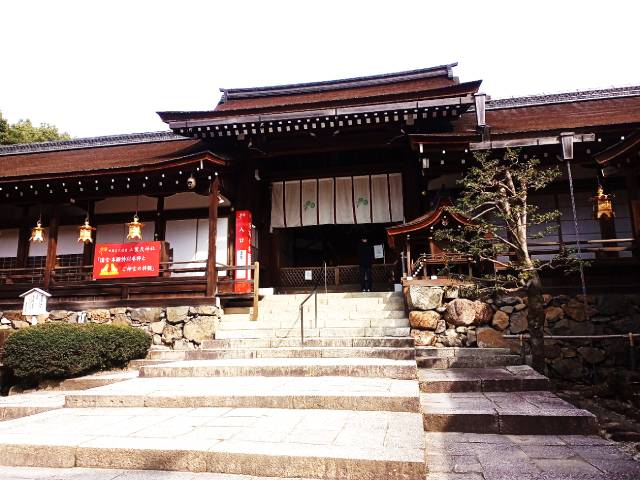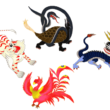Kamigamo Shrine Prayer Journey
Posted date:2024-06-27Author:じゅうべい(Jubei) Transrator:ポンタ(Ponta)
Category:Kyoto Benefits , Kyoto tourist spot
広告
adsense4
Oh, what a magnificent torii gate! Today, Kamigamo Shrine seems to be open to all. Let me go and make a quick visit to the shrine.
Second torii of Kamigamo Shrine

Pass through the torii gate to enter the grounds.

Hmm? What is that triangular pyramid of sand mountain?

Let’s go.
Tate-suna

The custom of purifying sand by sprinkling it on the demon’s gate and the back demon’s gate originated from this belief in tate-suna.
I see. This tate-suna is in the shape of a divine mountain, and is a symbol of the deity Kamo Wake-Ikaduchi-no-kami. Three and two pine needles are erected at the top, seemingly forming a pair of yang and yin.
Now, further ahead, the tower gate can be seen.

Beautiful vermilion-lacquered tower gate.

Look at this tower gate. It is always magnificent and beautiful.
The area seems to be busy today, too.

Now, after passing through this tower gate, you will finally reach the main shrine.
adsense2

The main shrine
Kamo Wake-Ikaduchi-no-Ookami is enshrined in the main shrine. This deity is said to be as powerful as thunder to ward off bad luck. It is also said to be blessed with power to ward off evil when doing things, to ward off lightning and to ensure victory.
Eh? What? Is there more? Prayers for electricity, industrial protection, good fortune, removal of the eight directions (prayers for the removal of all disasters that come from geographical features, house features, direction and year-round, etc…)
It has various benefits, doesn’t it? I admire it.
Various kinds of people visited here, Kamigamo Shrine today, too. No matter how much time has passed, it seems that our prayers to God remain the same. There are prayers in the center of living. It has rarely been rethought these days, but you might well do such a way of living.
In other words, prayer is not for life.
Prayer is not a means (for something) in life (omitted).

I suddenly remembered something about prayer and here is the statement. This point made by Buddhist scholar Miyasaka Yuhong (abbot of Teruko-ji Temple, Chizan School of Shingon Buddhism, Okaya City, Nagano Prefecture) is, I believe, a very important reminder of the essence of prayer. Prayer that is a testimony of human humility and a means of spiritual growth. It is something we will continue to cherish.
Kamigamo Shrine
- Address:
603-8047
Kyoto Prefecture Kyoto City Kita Ward Kamigamo Honzan 339 - TEL: 075-072-6618(The reception hours are 8:00 – 17:00.)
- URL: https://www.kamigamojinja.jp/
- Facebook:https://www.facebook.com/profile.php?id=100075690284944
- Instagram:https://www.instagram.com/kamigamojinja.official/
- Hours of worship:
5:30-17:00
Special visits 10:00-16:00 (depending on the time of year). - Fee: Free in the precincts, special visit to the main shrine for 500 yen (depending on the time of year).
- Access: Short walk from Kamigamo jinja-mae bus stop on the city bus.
- Parking lots: https://www.kamigamojinja.jp/access/
Author
じゅうべい(Jubei)
Hello everyone. I am Jubei, an earthling whose energy does not stop today. What I like is playing (manga, movies, music (J-Rock, etc.) and visiting cafes). Thank you for your understanding.













